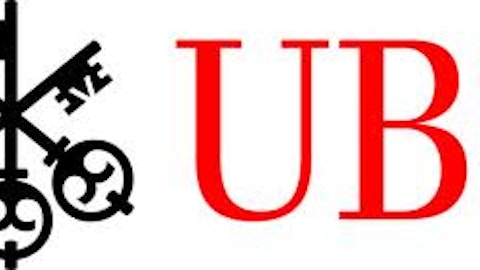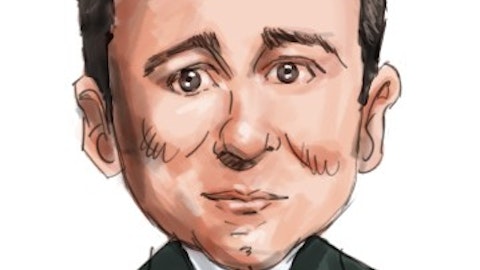Recently, a famous private equity fund, Carlyle Group LP (NASDAQ:CG), entered discussions with NASDAQ OMX Group, Inc. (NASDAQ:NDAQ) to discuss taking the exchange company private. However, the deal fell apart because the two parties couldn’t agree with each other on the buyout price. Since the middle of 2012, NASDAQ’s share price has experienced quite a sweet rise, from $22 per share to more than $31 per share. Is NASDAQ a good investment opportunity at its current price? Let’s see.
NASDAQ, founded in 1971, is a global exchange group operating several exchanges, including the NASDAQ Stock Market in the US. It has three main business segments: Market Services, Issuer Services, and Market Technology. The majority of its net revenue (less transaction rebates, brokerage, clearance and exchange fees), $1.1 billion, or 66.4%, was generated from the Market Services segment. The Issuer Services ranked second, generating $375 million in revenue, while the net revenue of the Market Technology segment was $184 million in 2012.
Consistent and Growing Cash Flow
What I like about NASDAQ is the consistent and growing cash flow that it has generated in the past 10 years. Since 2002, the operating cash flow has grown from $157 million to nearly $670 million. The free cash flow has also followed the same trend, increasing from $72 million in 2002 to $581 million in 2011. Indeed, I personally think that was what Carlyle was looking for: a growing and consistent cash generator. In addition, NASDAQ seems to have quite a strong balance sheet with a reasonable amount of leverage. As of December 2012, it had $5.2 billion in total equity, nearly $500 million in cash, and $1.93 billion in long-term debt. However, what worries me is the huge goodwill and intangible assets that NASDAQ carried on its balance sheet. At the end of 2012, it had $5.34 billion in goodwill and $1.65 billion in intangible assets. With the huge goodwill and intangibles, NASDAQ is quite vulnerable to write-downs, which would negatively affect its short-term earnings result. Since 2007, NASDAQ has returned a huge amount of cash to shareholders in the form of share buybacks. The amount of treasury stock increased from $8 million in 2007 to more than $1 billion in 2012.
Relatively Undervalued Compared to Peers
At the current trading price of $31 per share, NASDAQ’s total market cap is $5.12 billion. The market is valuing NASDAQ at only 7.28x EV/EBITDA. This valuation could be considered the cheapest compared to its two peers CME Group Inc (NASDAQ:CME) and NYSE Euronext (NYSE:NYX). CME is trading at $58.50 per share, with a total market cap of $19.4 billion. The market is valuing CME at 10.57x EV/EBITDA. NYSE Euronext seems to be the most expensive, with 11.2x EV multiples. NYSE Euronext is trading at nearly $37.60 per share, with a total market cap of $9.13 billion. Among the three, CME seemed to be the most profitable, with a 58% operating margin. NASDAQ ranked second with a 25% operating margin, while the LTM operating margin of NYSE Euronext was 22%. NASDAQ is paying investors the lowest dividend yield at 1.7% while the dividend yields of CME and NYSE Euronext are 3.1% and 3.2%, respectively. If NASDAQ were trading at a comparable level to its peers, at around 10x EV/EBITDA, NASDAQ’s enterprise value would be $8.75 billion. Thus, NASDAQ would be worth around $7.5 billion on the market, or around $45.50 per share.






